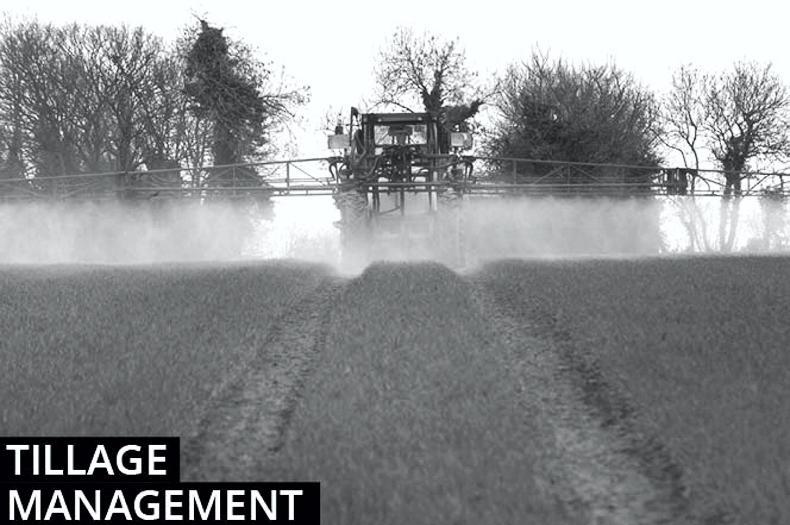Planting
Planting of all crops is continuing in reasonable ground conditions. It remains difficult to roll post planting but this should still be considered if the ground dries adequately, especially underneath. Slugs are a serious problems in many fields and, where possible, this should be the first control action taken.
Seeding rates must now leave more than a little for the crow and the slug. Having seeds well covered should help to reduce the problem but lower establishment is inevitable and higher seed rates are needed to compensate.
But more seed is not the entire answer as you may still end up investing in lead and slug pellets.
Target up to 380 seeds/m2 for wheat, 400 for barley and 450 for oats. These equate to 210kg/ha (13.4st/ac) for 55g wheat and 53g barley and 180kg/ha (11.5st/ac)for 40g oats.
Herbicides
Most early sown crops have already been sprayed with herbicides.
Crops just planted on land with brome or blackgrass problems should be sprayed pre-emerge while ground conditions remain good.
This might be a pendimethalin (PDM) product like Stomp with the intention to follow up later, or in spring, for the grass and other broadleaved weeds.
Fields that do not have serious grass weed problems might be sprayed with products like Firebird, Flight, Defy plus DFF or Vigon.
Pre-emerge is an important timing for these also. Established wheat crops that have not received herbicides might be sprayed with products like Alister after GS13. Many of these products are crop-specific and most cannot be used on oats.
BYDV
Aphids remain a threat for BYDV transfer so the forecasted drop in temperatures is welcome. Crops being planted now may not need any aphid sprays (some are dressed with Deter due to delayed planting).
But crops sown back in early September should get a follow-up aphicide about six weeks post-emergence.
Read more
Weather window enables frenzy of field activity
Planting
Planting of all crops is continuing in reasonable ground conditions. It remains difficult to roll post planting but this should still be considered if the ground dries adequately, especially underneath. Slugs are a serious problems in many fields and, where possible, this should be the first control action taken.
Seeding rates must now leave more than a little for the crow and the slug. Having seeds well covered should help to reduce the problem but lower establishment is inevitable and higher seed rates are needed to compensate.
But more seed is not the entire answer as you may still end up investing in lead and slug pellets.
Target up to 380 seeds/m2 for wheat, 400 for barley and 450 for oats. These equate to 210kg/ha (13.4st/ac) for 55g wheat and 53g barley and 180kg/ha (11.5st/ac)for 40g oats.
Herbicides
Most early sown crops have already been sprayed with herbicides.
Crops just planted on land with brome or blackgrass problems should be sprayed pre-emerge while ground conditions remain good.
This might be a pendimethalin (PDM) product like Stomp with the intention to follow up later, or in spring, for the grass and other broadleaved weeds.
Fields that do not have serious grass weed problems might be sprayed with products like Firebird, Flight, Defy plus DFF or Vigon.
Pre-emerge is an important timing for these also. Established wheat crops that have not received herbicides might be sprayed with products like Alister after GS13. Many of these products are crop-specific and most cannot be used on oats.
BYDV
Aphids remain a threat for BYDV transfer so the forecasted drop in temperatures is welcome. Crops being planted now may not need any aphid sprays (some are dressed with Deter due to delayed planting).
But crops sown back in early September should get a follow-up aphicide about six weeks post-emergence.
Read more
Weather window enables frenzy of field activity






 This is a subscriber-only article
This is a subscriber-only article











SHARING OPTIONS: